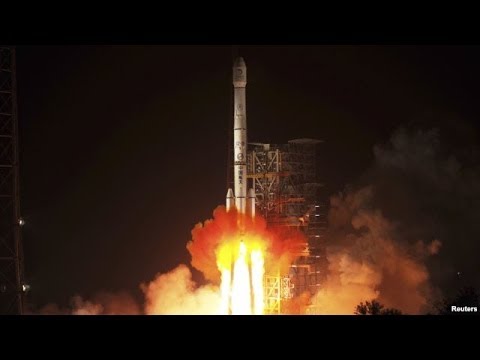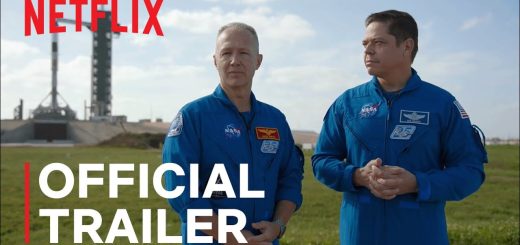China’s Space Station Ban
This video is supported by Dashlane, the passwordmanager that keeps your personal data in asecure and convenient place. Try Dashlane for free on your first deviceby visiting dashlane. com/primalspace. In November 1998, the first module of theInternational Space Station was launched into orbit. Over the last two decades, it’s been thehome to hundreds of astronautsfrom 19 different countries. This enormous collaboration between differentnations shows just how much can be achievedwhen the world comes together. However, not every nation is allowed to takepart in the ISS program. China has never taken part in the programand since 2011 – they were officially bannedfrom doing so. In this video, we’re going to look at thehistory of unlikely space collaborations. We’re also going to look at why the US losttrust in China’s space program and China’sfuture plans to make their own space station. In the midst of the Cold War, space was theultimate frontier between the United Statesand the Soviet Union. After political tensions fueled the advancementsin rocket technology, the space race eventuallycame to a conclusion when Apollo 11 successfullylanded on the Moon. As the political landscape of the Cold Warbegan to ease, a milestone was reached in1975 when the US and Soviets worked togetheron the Apollo-Soyuz Project – a mission whichinvolved both nations docking their capsulestogether in space. The mission began in Baikonur where two Cosmonautslaunched on the Soyuz 19 capsule. A few hours later, the Apollo capsule liftedoff from US soil – launching three astronautsinto space where it docked with the Soyuzcapsule. Three hours after docking, the first internationalhandshake in space took place through thehatch of the Soyuz capsule. This extraordinary moment signified a strongshift in the space race and ushered in a newera of international collaboration. Fast forward 23 years and the largest space collaboration was about to begin -the International Space Station. Spearheaded by NASA, the space station involved15 nations and 5 different space agencies. Besides the technical challenges of developingand launching an entire space station, gettingall of these countries to work together requiredan extreme amount of trust. At first, NASA were concerned that Russiawould use the opportunity to transfer advancedtechnology for their own militaryuse. But after the Columbia disaster grounded the Space Shuttle, NASA had no choice but to relyon Russia to transport astronauts to and fromthe space station. Despite the worldwide collaboration requiredto build the ISS, China was one of the largestcountries not invited to join the InternationalSpace Station. At the time, the Chinese Space Administrationwas only 5 years old and the rest of the nationsfelt that China was simply not ready to makea meaningful contribution to the project. So China plowed forward with their own spaceprogram – and in 2003, became the only nationother than the US and Russia to launch a humaninto space. As progress continued on the ISS, China statedtheir desire to join the ISS as a new member. However, legislation introduced by U. S. Congressin 2011 eliminated the possibility of Chinajoining the ISS. In this legislation, a provision known asthe “Wolf Amendment” was passed to forbidNASA and U. S. companies from sharing technologicaladvancements with the Chinese government. Although this may seem like a harsh decision, America’s distrust in China was not completely unfounded. In 2007, China deployed an anti-satelliteweapon to destroy one of its own weather satellites. This received worldwide criticism for thedangerous amounts of space debris it caused. A decade later, two Chinese nationals werecharged by the U. S. Department of Justicefor allegedly hacking information from NASA’sJet Propulsion Laboratory. Despite being banned from the ISS, China continuesto rapidly advance their space program. In 2019, China became the first nation ever to successfully land a spacecrafton the far side of the Moon. In 2011, they launched a space station knownas Tiangong 1, which was soon followed in2016 by Tiangong 2. The final form of the Chinese Space Stationwill be one-fifth the size of the ISS andis expected to be completed by 2023. While the United States remains against theidea of a Chinese collaboration, other spaceagencies are not so keen to avoid partnership. The European Space Agency have been clearabout their willingness to let China intothe ISS – and countries such as Italy haveeven agreed to collaborate with China on futuremanned-space flight missions. Whether they were rightfully excluded fromthe ISS or not, China has been successfulin developing their own space program. Over the next few decades, they are poised to become an even bigger player within the space community. But at the end of the day, space explorationshould bring nations together. Our greatest achievements in space come whenlarge teams of people work together to achievea shared goal. Thanks to Dashlane for supporting this episodeof Primal Space. Dashlane is the best way to manage and rememberall of your passwords, personal data and paymentinformation so you don’t have to. When you sign up to Dashlane you choose a master password which will never leave your device. Every time you sign up to a website, Dashlanegenerates a long and complicated passwordwhich is encrypted using your master password. This keeps all of your passwords secure andmeans you only ever need to remember one password. Dashlane also has a secure autofill feature that works for personal information and credit cards,saving you time when shopping online. Dashlane works across all devices and youcan try it for free on your first device byvisiting dashlane. com/primalspace. Thank you very much for watching and I’llsee you in the next video.













